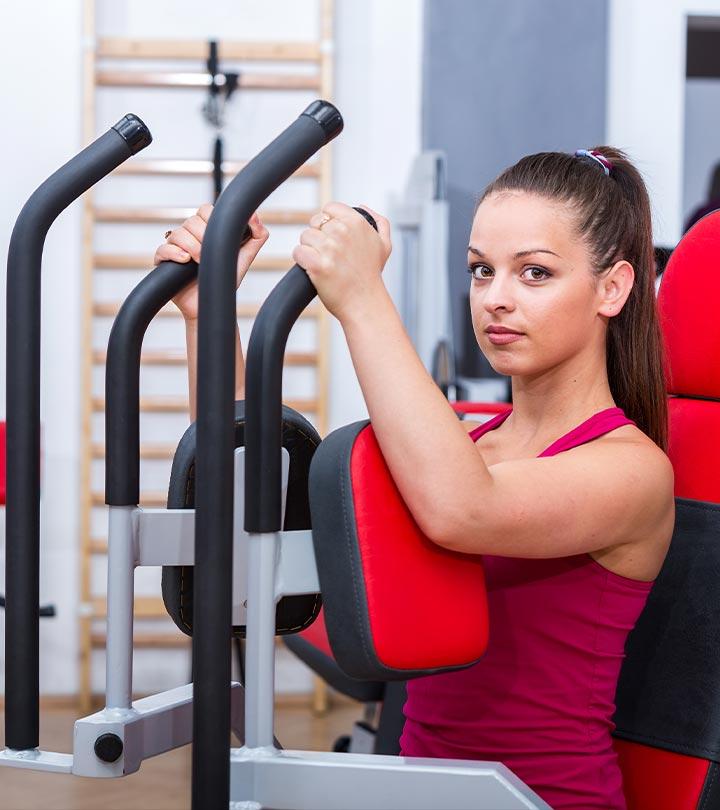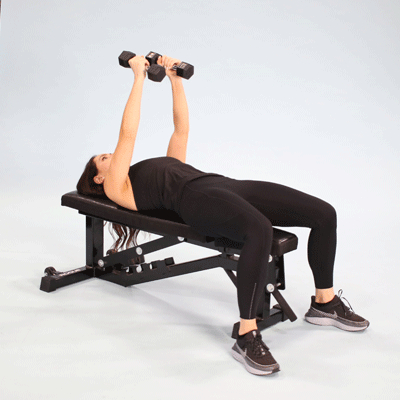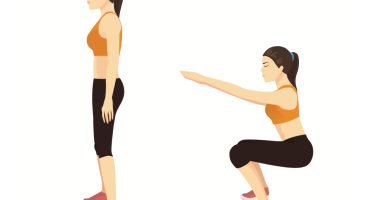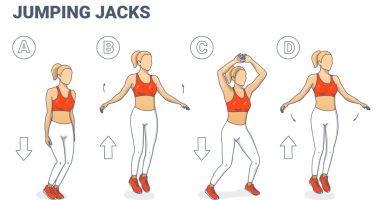If you’re aiming to build your chest muscles, enhance your upper body strength, and improve muscle balance and symmetry, then keep reading to know every detail about butterfly chest exercise and how to go about it.

So many exercises concentrate on the core, back, and legs. But chest exercises often don’t get as much attention. What a mistake that is!
Strengthening both the front and back of your chest (pectoral muscles) can do a lot for you. This includes improving posture, making everyday activities easier, and even enhancing breathing.
Would you like to show your chest some affection? Well then, here’s how the butterfly chest exercise works and what you need to do for maximum results!
Fact About Butterfly Chest Exercise

The butterfly chest exercise, or chest fly, is an effective pectoral workout. Here’s what it does:
The workout requires you to extend your arms out to the sides and then bring them back together in front of your chest. If done properly, you should create a “flapping” like that of a butterfly. You can use a cable machine, dumbbells, resistance bands, or a chest fly machine to perform this action.
When pushing your arms out and bringing them back together, both pectoral (major and minor) muscles contract and relax within the chest wall. The resistance exerted on these muscles by the machine’s weight or bands’ tension causes them to work against such force thereby leading to muscle contraction and strengthening.
In addition to that, the butterfly chest exercise also involves synergist muscles like the front deltoids (shoulders) and triceps which support pectorals during movement. Furthermore, doing variations e.g., stability ball may challenge core stability muscles even more so.
If one consistently incorporates the butterfly chest exercise into his or her routine, there are many benefits he or she can anticipate!
ALSO READ: Stop Ignoring These Exercises, Office Workers
Butterfly Chest Exercise Benefits

1. Strengthens Pectoralis Muscles
The butterfly chest workout is great for strengthening and building the major and minor pectoralis muscles. These are important muscles for different upper body movements which help in the overall stability and strength of the upper body.
The pectoralis major is a big muscle which covers most part of your chests while the pectoralis minor lies beneath it. Both these muscles are responsible for the shoulder joint movements such as pushing or lifting something up. If you strengthen them not only will you enhance how your chest looks like but also functional strength for daily activities and sports.
To get best results when you want to grow strong pectoral muscles it is advisable that one does the butterfly chest workout 2-3 times a week while increasing resistance gradually with time. This means being able to lift heavy weights but the most important thing is consistency more than anything else so this should not be forgotten if at all someone wants their chest area grow in terms of muscles size and strength.
2. Tones Synergist Muscles
To support the chest wall during butterfly chest exercises, the front shoulder muscles and biceps work together as synergists. According to one study, this helps reduce injuries as well as improve overall control of movement by stabilizing the area around the chest.
Also, the stability of the humeral head is improved when synergistic muscles are engaged. This is especially necessary when there are activities involving frequent overhead movements or repetitive use of the shoulder joint, where strong synergistic muscles can help prevent strains and injuries.
Moreover, while performing butterfly chest exercises, stabilizing muscles come into play alongside prime movers for a more coordinated movement pattern. In order to achieve maximal performance during an exercise it is important that these stabilizers work efficiently together with other muscles groups involved in the activity.
Furthermore, core muscles can be further activated by doing pec deck flys on a Swiss ball so as to stabilize them while balancing on the unstable surface thereby intensifying this workout routine and enhancing coordination of the core. When you perform this variation it will challenge your balance even more than before which in turn leads to increased strength levels in your abdominals.
3. Enhances Upper Body Strength and Stability
The chest is the primary focus of the butterfly exercise, but it also works other muscles in the upper body. This exercise pushes your front shoulders and triceps forwards, so increasing the strength and stability of this part of your body generally improves your ability to perform better in different workouts and daily tasks that require strength of the upper body muscles.
4. Improves Posture
Weak pectoral muscles may cause a rounded back which leads to pain or discomfort. When you do the butterfly exercise these muscles are strengthened thus pulling back shoulders bringing them into alignment hence improving overall posture. This will not only make you look good but also relieve any pressure on the spine or neck.
5. Increases Core Engagement
Even though it mainly targets chest muscles alone, doing butterflies correctly demands that one maintains stability through their core all along the movement. To this end, isometric contractions of abdominal wall muscle groups occur for extended periods without changing length significantly thereby stabilizing lumbar region from excessive range extension/flexion movements while performing such activities as deadlifts where strong hips drive upward motion while back remains straight throughout execution until standing upright posture secured.

6. Enhances Flexibility and Range of Motion
A butterfly movement that pushes in a controlled manner to stretch the chest muscles and surrounding tissues is known as the butterfly exercise. This helps in increasing flexibility in the shoulders which is required for daily activities like reaching upwards or hugging someone tightly.
7. Prevents Injuries
The shoulders can be protected from injuries by strong chest muscles. The pectoralis major muscle helps to stabilize the shoulder joint. If this particularity becomes weak then there are chances that an injury might occur on your shoulder especially during exercises involving pushing movements.
8. For Different Fitness Levels
The butterfly exercise is an all rounder workout that suits everyone irrespective of their level in fitness. While starting off beginners are supposed to use lighter weights or lower resistance settings so as not strain much then they can gradually increase with time as they gain more strength. On the other hand experienced lifters can opt for heavier weights or higher resistance settings to make it more challenging
9. Minimizes Muscle Imbalances
The upper body parts should grow proportionally meaning each part should get enough attention while training them. Imbalanced growth affects the posture of a person and can also lead to injuries because some areas become weaker than others. By focusing only on chest muscles during workout helps prevent such scenarios since all other groups will develop equally alongside these ones
10. Supports Muscle Connection
Butterfly exercises are done slowly and deliberately thereby enabling one concentrate better on his/her inner chest which harbors pecs major. This kind of focus maximizes productivity while minimizing wastage of energy thus achieving desired results within a short period. It also boosts confidence. Having a bigger chest can improve your general physical outlook as well as your self-assurance. The chest fly exercise helps to make your chest muscles stronger and more pronounced contributing to a firmer upper body which will make you feel better about yourself.
In a nutshell, the benefits of the butterfly chest exercise cannot be overlooked! here’s how to properly perform this effective pectoral workout.
ALSO READ: Simple exercises to lose weight at home
Maximize The Result: How To Do Butterfly Chest Exercise Properly

Simply conducting a butterfly chest workout will not yield top results. Below is what you need to perform so as to make this exercise more effective:
Setting up the machine: To begin, adjust the seat height so that your arms are slightly bent when gripping the handles from the starting position. Your back needs to be flat against the seat back with engaged core muscles throughout the movement in order to maintain proper posture.
The perfect squeeze: Concentrate on gradually bringing the hands together and contracting the chest muscles at their maximum although you should not exert too much force. Imagine that you are giving yourself a big hug! Ensure there is no breakdown of the arms towards each other; keep them bent slightly at all times during this exercise.
Full range of motion: Do not cheat yourself out of gains by only going halfway down! Lower handles until a stretch is felt in pectorals but do not allow shoulders round forward or back to curve excessively as this will cause injury if done repeatedly over time. Keep an upright position while doing so then bring back up again until they touch while keeping them straightened out completely so far as possible should be limited only due its potential risk factor associated with performing frequently over prolonged periods.
Weight selection: Select a weight that tires you out after 8-12 lifts but enables you to maintain proper form. If you can do 15 reps easily, then it is high time you considered increasing the amount that you are lifting. Conversely, if your technique starts failing you before hitting 8 repetitions, reduce the load.
Slow and steady wins the race: Forget about fast, jerky movements. Concentrate on slow and controlled moves while lifting and lowering the bar during bench presses or dumbbell flies. This will keep your muscles under continuous tension for longer periods thereby stimulating maximum hypertrophy.
Mind-muscle connection: Visualize as though there is an elastic band being stretched and contracted between your hands as you perform any chest exercise. This will help you establish the connection between your brain and this particular muscle group hence ensuring that each rep counts towards its growth.
Variants of Difficulty: Once you get the hang of the standard butterfly movement, test yourself with other forms that will work different parts of your chest. An incline butterfly will concentrate on your upper chest, while a decline butterfly shifts the focus to your lower chest. Alternatively, you could try a neutral grip butterfly exercise which balances out development across all areas.
Combine with Other Exercises: The butterfly should not be your sole chest exercise. Pair it up with other such as push-ups, dips or dumbbell bench presses for a complete chest workout routine.
Progressive Overload: To keep challenging the muscle and ensuring continuous growth, you need to gradually increase the weights lifted as well as the sets or reps done over time. This principle is known as progressive overload and it forces your muscles to adapt thus becoming stronger.
Tips
- Warm Up: Perform light cardio and dynamic stretches before starting the butterfly exercise to prepare your muscles for the workout and reduce the risk of injury.
- Cool Down: Don’t forget to cool down! After completing your sets of butterfly, spend some time doing static stretches that will help increase flexibility while also preventing any potential muscle soreness from occurring afterwards.
- Listen To Your Body: Be mindful about what your body may be telling you. Stop doing an activity if it causes pain, and talk with a medical professional as soon as possible.
ALSO READ: 13 Most Effective Exercises To Slow Muscle Aging
Resources
- https://www.physio-pedia.com/Pectoralis_major
- https://www.nhs.uk/live-well/exercise/strength-exercises/
- https://www.ncbi.nlm.nih.gov/books/NBK545241/
- https://www.ncbi.nlm.nih.gov/pmc/articles/PMC7675616/
- https://www.healthline.com/health/exercise-fitness/dumbbell-chest-fly









